Der englische König Karl I. verschickte kurz vor seiner Hinrichtung im Jahr 1648 mehrere verschlüsselte Briefe an seinen Sohn. Diese Texte sind bis heute ungelöst.
English version (translated with DeepL)
Wie wär’s mit etwas Geschichte? Karl I. (1600-1649) war von 1625 bis 1649 König von England, Schottland und Irland. Er geriet in Konflikt mit dem Parlament und versuchte, ohne dieses zu regieren, was den englischen Bürgerkrieg auslöste.
1647 wurde Karl zunächst unter Hausarrest gestellt und dann inhaftiert, konnte jedoch auf die Isle of Wight, eine Insel vor der englischen Südküste, fliehen. Dort suchte er die Unterstützung des Gouverneurs, doch dieser ließ ihn erneut festnehmen.
Von November 1647 bis Dezember 1648 verbrachte Karl I. etwa ein Jahr in Gefangeschaft auf Carisbrooke Castle auf der Isle of Wight. Heute ist dieses Schloss eine Touristenattraktion.
Aus seiner Gefangenschaft in Carisbrooke Castle verschickte Karl eine Reihe von verschlüsselten Briefen an seinen Sohn. Diese sind meines Wissens bisher ungelöst. Ende 1648 wurde Karl zurück nach London gebracht und dort im Januar 1649 hingerichtet.
Die verschlüsselten Briefe
Heute in einer Woche, am 18. April 2021 um 19:30 Uhr (deutsche Zeit), werde ich zusammen mit Elonka Dunin ein Webinar zum Thema “More famous and not-so-famous unsolved codes” halten. Veranstalter ist das National Museum of Computing in Bletchley Park. Wir werden zehn ungelöste Verschlüsselungen vorstellen, darunter die Beale-Kryptogramme und die verschlüsselten Notizen des Mordopfers Paul Rubin. Wer teilnehmen will, muss sich auf der verlinkten Webseite registrieren. Vielleicht hat ja der eine oder andere Leser Lust.
Eigentlich wollten Elonka und ich weitgehend die gleichen Folien verwenden wie bei unserem Vortrag mit gleichen Titel, den wir im ICCH-Forum gehalten haben. Doch meine Blog-Leser haben uns einen Strich durch die Rechnung gemacht. Sie haben zum einen gezeigt, dass das Rilke-Kryptogramm kein verschlüsselter Text ist und daher nicht gelöst werden kann. Zum anderen haben die Blog-Leser Adam Sampson und Matthew Brown das Utah-Krieg-Kryptogramm gelöst. Wir mussten also zwei Geschichten streichen und Ersatz finden. Angesichts der vielen ungelösten Krypto-Rätsel, die ich auf meinem Blog schon behandelt habe, war das nicht schwierig.
Als Ersatzthema haben Elonka und ich unter anderem die verschlüsselten Briefe von besagtem Karl I. ausgewählt. Auf der (äußerst empfehlenswerten) Webseite von Satoshi Tomokiyo kann man vier dieser Schreiben als Transkription nachlesen. Letztes Jahr habe ich über diese Geschichte gebloggt.
Elonka und ich haben etwas recherchiert und sind auf der Webseite der British Library auf ein Buch mit dem Original von einem der genannten Briefe gestoßen. Außerdem haben wir im gleichen Buch drei weitere Briefe aus dieser Reihe gefunden. Diese insgesamt sieben Botschaften möchte ich heute vorstellen. Wie man leicht erkennt, hat Karl I. jeweils nur Teile seiner Texte verschlüsselt. Man kann jedoch davon ausgehen, dass in diesen Passagen das Wichtige steht.
Brief an Benjamin Worsley (22. Mai 1648)
Der erste Brief auf Satoshis Webseite ist nicht an Karls Sohn, sondern an den Politiker und Wissenschaftler Benjamin Worsley gerichtet. Laut Satoshi könnte dieses Schreiben aber mit dem gleichen oder einem ähnlichen Verfahren verschlüsselt sein. Leider ist mir keine Abbildung des Originals bekannt. Hier ist Satoshis Transkription:
Z: / I am verrie well satisfied with the discreete & carefull account that you have given me of my Business & particularly that you did 208 343 294 74 9 45 86 18 96 1 40 82 395 380 2 20 3 230 388 45 36 4 11 7 43 31 62 270 248 now it will be 36 19 5 32 39 12 37 8 97 I desyre you to enquyre whether or not 396 213 355 204 28 21 363 257 64 36 46 9 32 395 42 35 14 53 38 23 18 50 88 but for this 236 308 267 356 282 96 62 86 205 17 356 66 50 97 206 231 248 38 1 20 2 230 388 46 36 257 208 86 25 268 8 3 50 240 6 51 248 416 303 78 9 68 45 in the meane Tyme lett me know 379 4 28 5 348 354 the …. 206 18 So I rest
Your asseured Frend,
J.
Brief an seinen Sohn (1. August 1648)
Am 1. August schrieb Karl I. an seinen Sohn (Seite 208r im besagten Buch):
Hier ist Satoshis Transkription:
I had written to you sooner had I knowen where you had been; and particularly that express which, upon Saterday last, I directed to your brother I had sent to you, but I thought that 379 361 185 28 20 329 592 60 93 5 214 126 379 90 37 1 258 6 2 212 370 196 379 245 339 363 329 165 246 16 50 212 196 444 149 13 44 32 14 26 10 78 43 65 329 331 380 17 49 29 338 77 102 365 5 20 532 9 41 282 212 202 379 371 182 339 337 212 140 30 74 5 50 60 107 381 214 339 93 85 6 23 220 78 57 152 5 65 I command you to doe nothing, whether it concerns War or Peace, but with the advice of your Councell; and that you be constant to those grounds of Religion and Honor which ….
[PS] This Cypher which now I write in, is that which was sent you by the noble frend who conveis this Letter to you from me.
Brief an seinen Sohn (1. September 1648)
Am 1. September schrieb Karl folgenden Brief (Seite 209r im besagten Buch, leider habe ich bisher keine Transkription vorliegen):
Brief an seinen Sohn (3. Oktober 1648)
Der nächste Brief ist auf den 3. Oktober datiert. Ein Scan des Originals ist mir nicht bekannt. Dafür ist der Text in einem Buch aus dem 18. Jahrhundert abgedruckt:
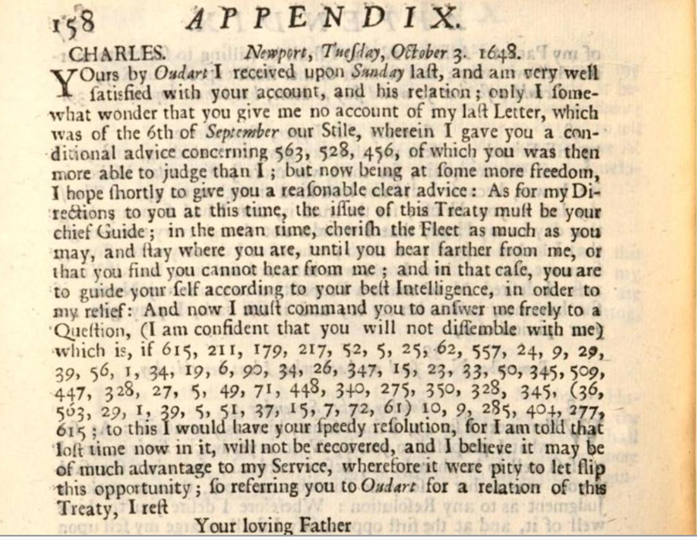
Quelle/Source: A Vindication of King Charles the Martyr: Proving that His Majesty was the … by Thomas Wagstaffe
Auf Satoshis Webseite gibt es folgende Transkription:
Your by Oudart I received upon Sunday last, and am very well satisfied with your account, and his relation; only I somewhat wonder that you give me no account of my last Letter, which was of the 6th of September our Stile, wherein I gave you a conditional advice concerning 563 528 456, of which you was then more able to judge than I; but now being at some more freedom, I hope shortly to give you a reasonable clear advice: ….
And now I must command you to answer me freely to a Question, (I am confident that you will not dissemble with me) which is, if 615 211 179 217 52 5 25 62 557 24 9 29 39 56 1 34 19 6 90 34 26 347 15 23 33 50 345 509 447 328 27 5 49 71 448 340 275 350 328 345 (36 563 29 1 39 5 51 37 15 7 72 61) 10 9 285 404 277 615 ; to this I would have your speedy resolution, for I am told that lost time now in it, will not be recovered, ….
Charles I to Prince Charles, Newport, 3 October 1648 (from Vindication)
Brief an seinen Sohn (6. November 1648)
Am 6. November schrieb Karl folgenden Brief (Seite 218r im Buch, leider habe ich bisher keine Transkription):
Brief an seinen Sohn (7. November 1648)
Am 7. November schrieb Karl anscheinend gleich zweimal an seinen Sohn. Hier ist die Transkription des ersten Schreibens (das Original liegt mir nicht vor):
Let none decypher this but your selfe, or my Lord Culpeper. ….I must desyre of you an account of the receipt of my former Letters, to witt fyve in October, besydes one yesterday; in some of which I gave you an advice 447 536 350 563 278 557 334 179 350 613 447 563 51 9 24 5 442 as allso 210 410 26 54 15 25 516 557 50 61 7 9 27 5 10 447 602 429 340 325 299 332 For other things I refer you to my former Letters, and to the obedience of your Mother’s commands. So God bless you, and send you perfect healthe and prosperity
Brief an seinen Sohn (7. November 1648)
Vom zweiten Schreiben des 7. November haben Elonka und ich folgenden Scan gefunden (Seite 219r):
Eine transkription liegt mir bisher nicht vor. Man beachte, dass der verschlüsselte Teil mit dem ersten Schreiben des Tages identisch ist. Der Rest des Texts ist dagegen unterschiedlich.
Lösungsansätze
Ich gehe stark davon aus, dass Karl I. für die Verschlüsselungen einen Nomenklator verwendet hat. Gut gemachte Nomenklator-Verschlüsselungen sind oft nur dann zu lösen, wenn man irgendwo die Beschreibung des Nomenklators findet. Blog-Leser Norbert Biermann war in einem ähnlichen Fall erfolgreich, wie ich kürzlich berichtet habe. Den Nomenklator von Karl I. konnte dagegen bisher meines Wissens noch niemand ausfindig machen.
Schlechte oder schlecht angewendete Nomenklatoren kann man teilweise auch durch Häufigkeitsanalysen und Wörterraten dechiffrieren. Doch in diesem Fall ist die Textmenge wohl zu gering, um damit Erfolg zu haben.
Falls jemand mehr zu diesem Thema sagen kann, bitte melden.
Follow @KlausSchmeh
Further reading: Wer löst diese Verschlüsselung aus dem Dreißigjährigen Krieg?
Linkedin: https://www.linkedin.com/groups/13501820
Facebook: https://www.facebook.com/groups/763282653806483/

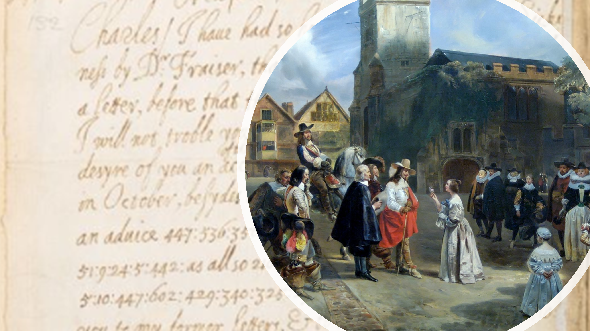

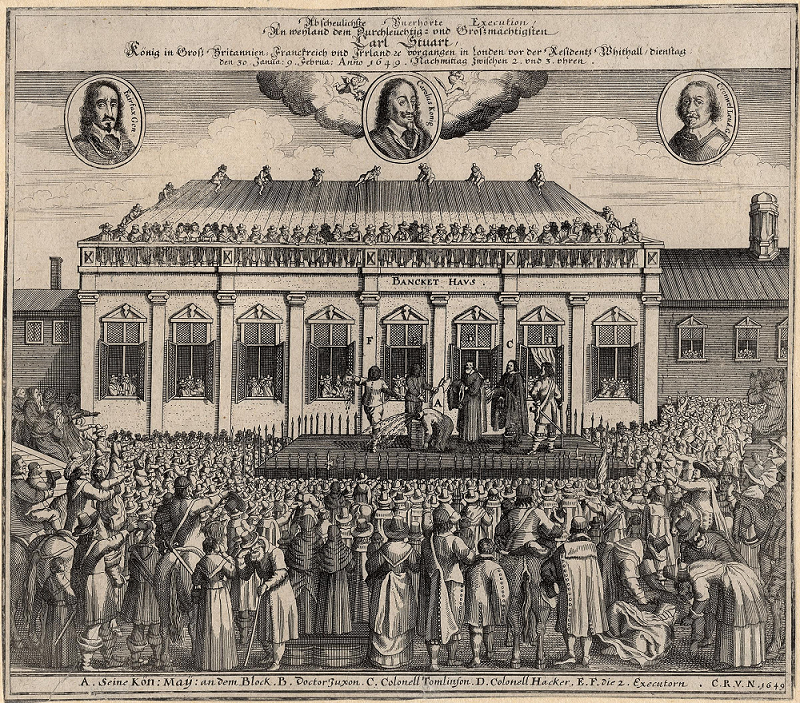
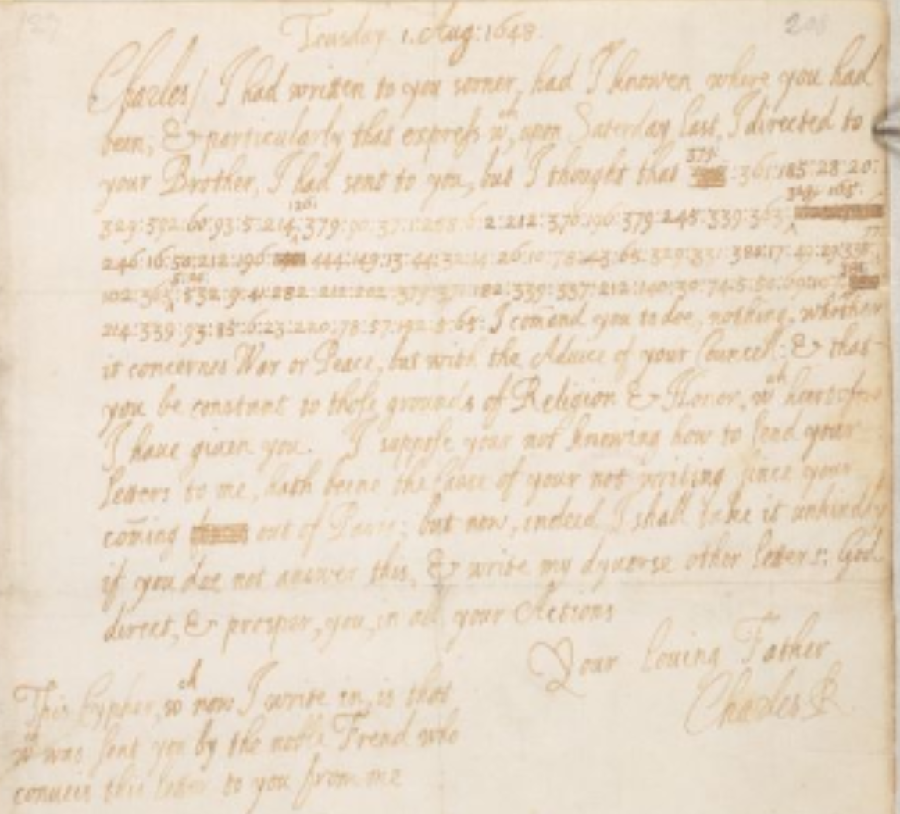

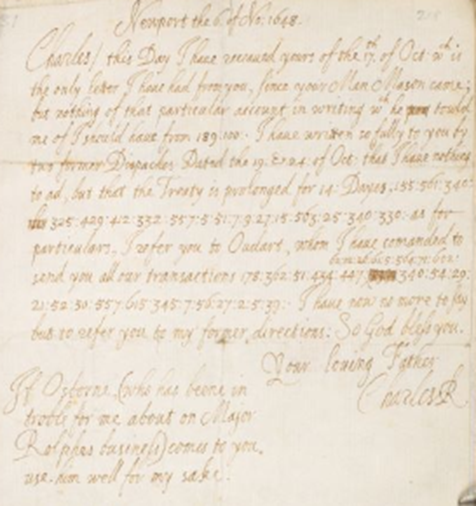
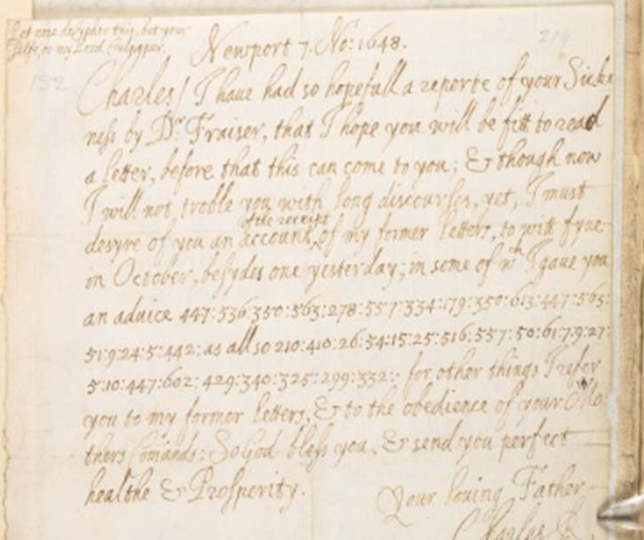

Kommentare (45)